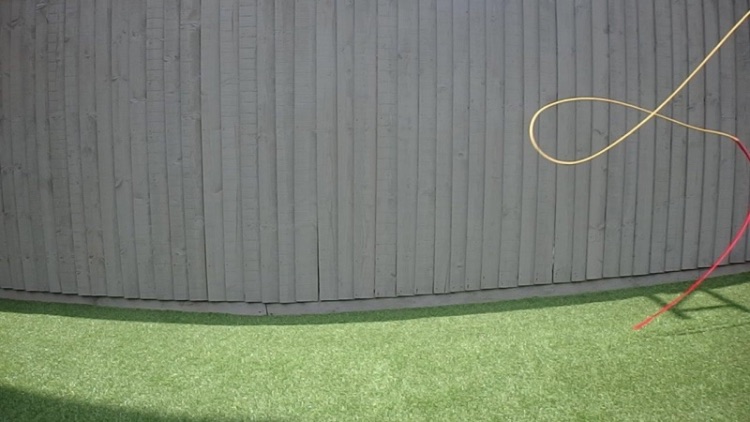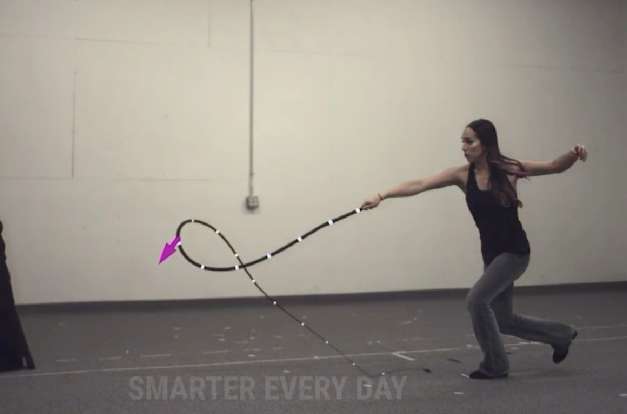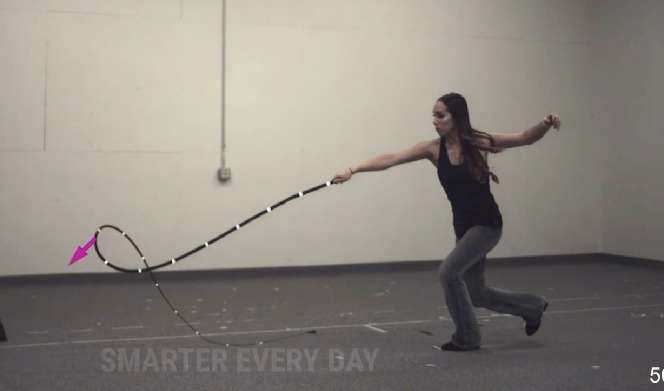PLEASE NOTE: In order to post on the Board you need to have registered. To register please email paul@sexyloops.com including your real name and username. Registration takes less than 24hrs, unless Paul is fishing deep in the jungle!
Miscellaneous (bead chains, string shooter, whips)
Moderator: Torsten
Re: Lift force acting on a fly line
Hi Gordy,
I'm not asking Torsten, Merlin or Dirk about momentum flux. You have an equation or two that you regularly rely on to produce graphs of lift. They usually have Rho values of less than 1000. These graphs are things you display as proof of your lift theory so let's put them to the test. I can examine momentum flux at a later time.
Can you use your equations to work out where the limit of lift can occur please? Then let me know what material you believe will not produce enough lift to cast. One where you expect the loop to fall at the rate gravity dictates.
A light weight steel or plastic chain, a rope or a piece of electrical cord all come to mind as things which are too dense for you to find lift at normal casting velocities. It might even be a piece of T17 sinking line, but that will be hard to film. Don't worry about my rod of the logistics of launching the "fly line": as long as it's not too heavy for me to accelerate with my own muscles, I'll try to make it work.
Cheers,
Graeme
I'm not asking Torsten, Merlin or Dirk about momentum flux. You have an equation or two that you regularly rely on to produce graphs of lift. They usually have Rho values of less than 1000. These graphs are things you display as proof of your lift theory so let's put them to the test. I can examine momentum flux at a later time.
Can you use your equations to work out where the limit of lift can occur please? Then let me know what material you believe will not produce enough lift to cast. One where you expect the loop to fall at the rate gravity dictates.
A light weight steel or plastic chain, a rope or a piece of electrical cord all come to mind as things which are too dense for you to find lift at normal casting velocities. It might even be a piece of T17 sinking line, but that will be hard to film. Don't worry about my rod of the logistics of launching the "fly line": as long as it's not too heavy for me to accelerate with my own muscles, I'll try to make it work.
Cheers,
Graeme
FFi CCI
- gordonjudd
- Posts: 1859
- Joined: Sat Jan 19, 2013 11:36 pm
- Location: Southern California
Re: Lift force acting on a fly line
Graeme,Don't worry about my rod of the logistics of launching the "fly line": as long as it's not too heavy for me to accelerate with my own muscles,
In that case try casting a 5 m length of metal bead chain, and try to angle the backcast up behind you such that the fly leg will have a negative tilt. That should produce some negative momentum flux and cause the loop to fall. The problem is gravity is going to cause the fly leg to drop so you probably will not be able to keep that negative angle in the fly leg for very long.
Then do the same thing but wait until the line in the backcast drops below the horizontal. That should produce some positive y momentum flux and cause the loop to rise.
Form and skin drag will be the same for the bead chain as it would for a line of comparable diameter, but the rho_l of the bead chain is so large that drag effects should not have much effect on the propagation of a bead chain loop.
Good luck.
Gordy
Re: Lift force acting on a fly line
Thanks Gordy,
I'll be using 15 metres of chain to give the loop the best chance of climbing or falling and of us being able to observe it. Do you agree? However, I don't think bead chain will have the tensile strength to withstand the forces I need to use. I'll try it. Do you have a second choice? (What sort of rho_l are you looking for?)
Won't aiming the cast down make it go down and aiming the cast up make it go up? That's just basic projectile motion physics. How does aiming it up or down eliminate the the question of projectile motion causing the change in y?
How about a cast aimed horizontally? If that should lift, wouldn't that be something to support your modelling? Do you agree?
Cheers,
Graeme
I'll be using 15 metres of chain to give the loop the best chance of climbing or falling and of us being able to observe it. Do you agree? However, I don't think bead chain will have the tensile strength to withstand the forces I need to use. I'll try it. Do you have a second choice? (What sort of rho_l are you looking for?)
Won't aiming the cast down make it go down and aiming the cast up make it go up? That's just basic projectile motion physics. How does aiming it up or down eliminate the the question of projectile motion causing the change in y?
How about a cast aimed horizontally? If that should lift, wouldn't that be something to support your modelling? Do you agree?
Cheers,
Graeme
FFi CCI
Re: Lift force acting on a fly line
Oh, and I will be casting a chain upwards because that's what I'd normally do and why loops seem to hold their height. Let's not stop at one, eh? 
FFi CCI
- gordonjudd
- Posts: 1859
- Joined: Sat Jan 19, 2013 11:36 pm
- Location: Southern California
Re: Lift force acting on a fly line
Graeme,How does aiming it up or down eliminate the the question of projectile motion causing the change in y?
I think it comes from the y component of the momentum flux.
Momentum is not a force. Just as for a cannon ball gravity will slow the initial y velocity of the line and cause it to start falling after a period of time.Won't aiming the cast down make it go down and aiming the cast up make it go up? That's just basic projectile motion physics.
Good luck casting 15 meters of bead chain with a fly rod. That will have a mass of around 250 grams.
Gordy
- Lee Cummings
- Posts: 364
- Joined: Tue Feb 19, 2013 12:23 pm
Re: Lift force acting on a fly line
Have fun with the bead chain casting experiments Graham, it will be fine...
I once fished with it
Cheers
Lee
I once fished with it
Cheers
Lee
- gordonjudd
- Posts: 1859
- Joined: Sat Jan 19, 2013 11:36 pm
- Location: Southern California
Re: Lift force acting on a fly line
Graeme,Without the lift, the rod leg should sag according to the numeric modelling, correct?
Without lift on the loop end of the rod leg I would expect it to fall just as it does when the loop rolls out.
As has been mentioned (but probably not understood) the fly leg will reach a steady state tilt angle where the upward force from form drag will balance the downward force of gravity just as it does in the line wind gauge experiment. That is why the upward force acting on the loop only needs to uphold its end of the catenary shape of the rod leg not the entire line mass.
I don't see how that is even possible. If you drop a feather tied to a rock in an up welling air stream will the upward force on the feather keep it airborne? Not unless that upward force is greater than the weight of the rock and that is a very unlikely prospect.So when I cast 15 metres of chain simultaneously with 15m of fly line, the chain will droop and the fly line will not, according to the premise of this thread.
I don't think you will be able to generate enough top leg speed for that balance condition to occur with heavy bead chain, but then that is the reason for doing experiments.
Gordy
Re: Lift force acting on a fly line
Hi Gordy,
Thanks for your thoughts. To be clear, you’re expecting the rod leg of fly line to stay airborne and the rod leg of the bead chain to fall. Is that right? Or is it the loop of the fly line will maintain its height and the loop of the bead chain to fall faster?
I’m expecting both to stay airborne and perhaps the rod leg of the bead chain to be higher than the rod leg of the fly line.
Cheers,
Graeme
Thanks for your thoughts. To be clear, you’re expecting the rod leg of fly line to stay airborne and the rod leg of the bead chain to fall. Is that right? Or is it the loop of the fly line will maintain its height and the loop of the bead chain to fall faster?
I’m expecting both to stay airborne and perhaps the rod leg of the bead chain to be higher than the rod leg of the fly line.
Cheers,
Graeme
FFi CCI
Re: Lift force acting on a fly line
When I say “cast simultaneously” I’m doing something similar to Lee’s double line casting. One is fly line, the other bead chain (or similar).
FFi CCI
- gordonjudd
- Posts: 1859
- Joined: Sat Jan 19, 2013 11:36 pm
- Location: Southern California
Re: Lift force acting on a fly line
James,Now, to me, how it ends up there is blatantly obvious - and it's got nothing to do with aerodynamic lift or pixies.
If it so blatantly obvious can you explain why the fly leg droop angle in your roll cast quickly decreases and goes near the horizontal


https://www.sexyloops.com/images/FP138_4.jpg

and yet the heavier top leg of a whip wave does not rise up as it propagates? It seems to me the same forces would be going on in both.



It seems to me the same forces would be going on in both, yet the heavier end of the tip retains its droop while the lighter fly line rises. Why?
Gordy
